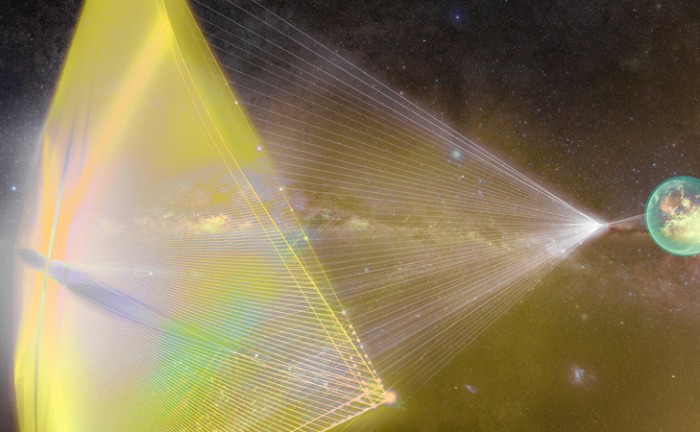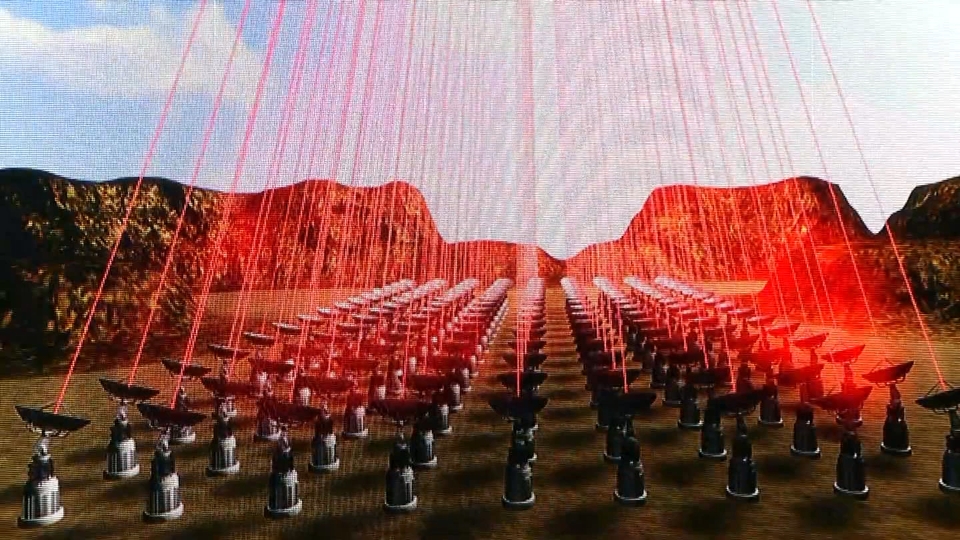
Are we the only intelligent beings in the Universe or are there several other perhaps even smarter civilizations just waiting to be discovered? That is the million dollar question scientists have been trying to answer for over 50 years. Now Russian billionaire Yuri Milner wants to solve the mystery once and for all, by reaching for the stars . . . Literally!
On April 12, the 55th anniversary of Russian cosmonaut Yuri Gagarin's historic launch to space, the entrepreneur, along with Nobel-prize winning physicist Steven Hawking and Facebook founder Mark Zuckerberg, announced “Breakthrough Starshot.” The $100 million USD project aims to build a prototype for a wafer-sized propelled robotic spacecraft that can get to the nearby Alpha Centauri in a mere 20 years.
Though that may appear slow, it is a vast improvement over the current technology that would take a spacecraft between 30,000-40,000 years to cover the 25.67 trillion mile distance between Earth and Alpha Centauri. The triple star system was chosen because of its proximity to our planet and the fact that researchers believe that an Earth-like planet may be orbiting one of its stars — Alpha Centauri B.

The Breakthrough Starshot team envisions a spacecraft the size of a postage stamp with a thin sail attached to it. Aboard the tiny “starchip,” will be a camera, photon thruster, and power supply. It will be launched to space aboard a mothership and then propelled to the distant star system with the help of laser lights beamed from a high-altitude area on Earth. Milner says that the nanocraft, “could capture images of possible planets and other scientific data and send them back home in a beam of light.” According to the entrepreneur "If this mission succeeds, it will tell us as much about ourselves as it will about Alpha Centauri.”
Though that sounds easy enough, the project is fraught with technological challenges. One of the biggest, of course, is building a spacecraft that is small, light, and has room for all the necessary equipment. While that could be possible given the advances in smartphone components, the tiny starchip will also have to be incredibly strong. That’s because it will have to withstand 60,000 times the normal force of gravity to make it to the desired speed in space.
Another enormous challenge is the laser array that will blast starchip into high speed. It will take the lasers 100 gigawatts, or about 100 times the output of a nuclear power plant, to propel just one of the probes. Even if scientists do manage to create an array that powerful, the sheer amount of energy could destroy everything in its path. There is also the issue of creating a thin and light sail that is not just robust enough to survive the blast to space, but also the rocks, dust, and ice, it will encounter on its way to Alpha Centauri. But despite all the hurdles, Milner is confident that Breakthrough Starshot will be successful in building a prototype that will help us acquire intelligence about the existence of aliens.

This is not the only project the billionaire has funded to find answers to this tricky question. In 2015, Milner launched “Breakthrough Listen.” The ten-year, $100 million USD program survey aims to study 1,000,000 of our closest stars, the plane and center of our galaxy, and the 100 nearest galaxies for radio and optical signals that are possibly being transmitted by alien civilizations.
Of course, finding aliens is of no use if we are unable to communicate with them. To solve that, the billionaire and his wife have created “Breakthrough Message.” The $1 million USD competition challenges entrants to come up with a message representing “Earth, life, and humanity,” that could potentially be understood by another civilization. Watch out aliens! One way or another, Yuri Milner and his team of experts are going to find you!
Resources: Space.com, Smithsonianmag.org, wired.co.uk